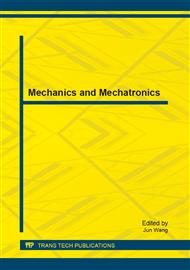p.62
p.67
p.74
p.81
p.86
p.91
p.97
p.103
p.107
Improvement of Performance on Flow-Cutoff of Flap Valves Set in the Pressurized Tank of Pumping Station Based on Numerical Simulation
Abstract:
Two small flap valves arranged in parallel for each pump were used as flow-cutoff device in certain large-scale axial flow pumping station where the pressurized tank was designed as outlet structure. The flap valves of side-set pump had the poorest performance on flow-cutoff in the pumping station. The flow field in the pressurized tank was shown based on numerical simulation in order to improve the flow-cutoff performance of flap valves. The standard k-ε turbulence model and momentum equations were solved in the SIMPLEC algorithm with the assumption that the free water surface remained flat as a stress-free plane of symmetry. The velocity distribution and free outflow were prescribed on inlet and outlet boundary respectively. Numerical simulation on the flow field in pressurized tank was done at three typical moments chosen in the basis of the flow variation in the process of shutdown of flap valves. The reason that two flap valves of side-set pump could not close simultaneously and the late closing flap valve had a huge force on the wall was analyzed based on the comparison of flow field for side-set pump and middle-set pump. The result from numerical simulation proves that the division pier with appropriate size which helps to improve the flow distribution uniformity is valid for the two flap valves of side-set pump to close simultaneously.
Info:
Periodical:
Pages:
86-90
Citation:
Online since:
October 2013
Authors:
Keywords:
Price:
Сopyright:
© 2013 Trans Tech Publications Ltd. All Rights Reserved
Share:
Citation:


